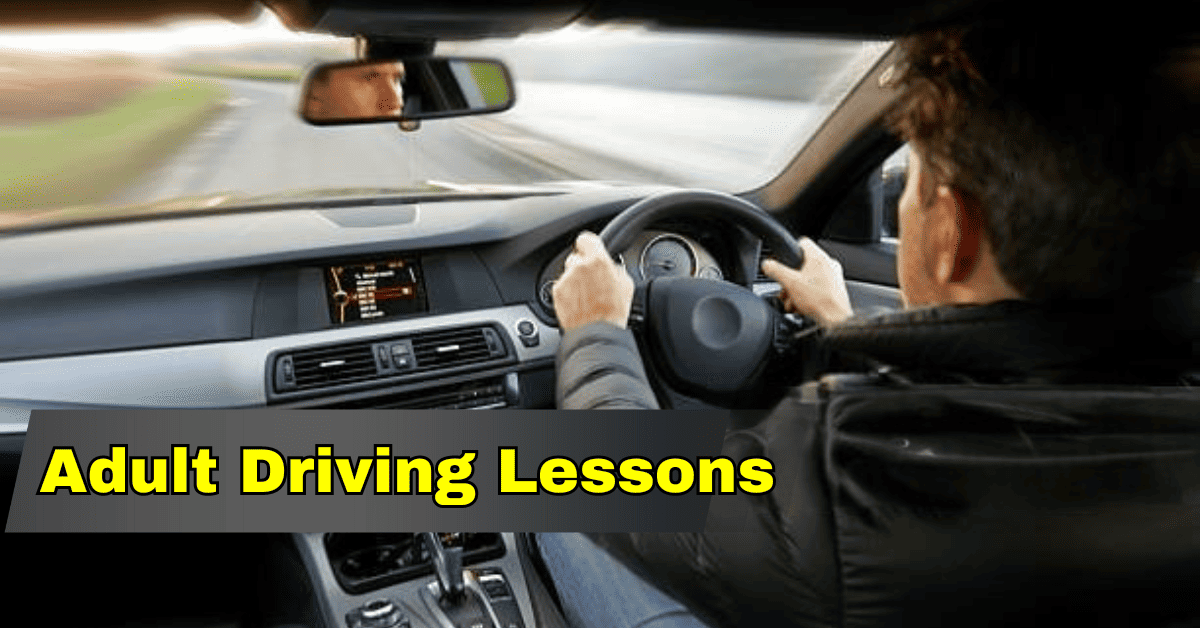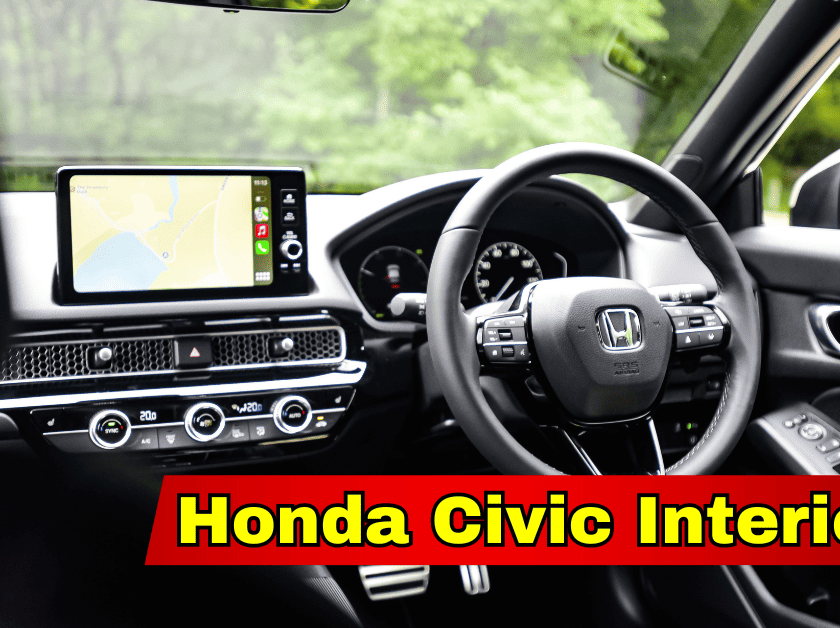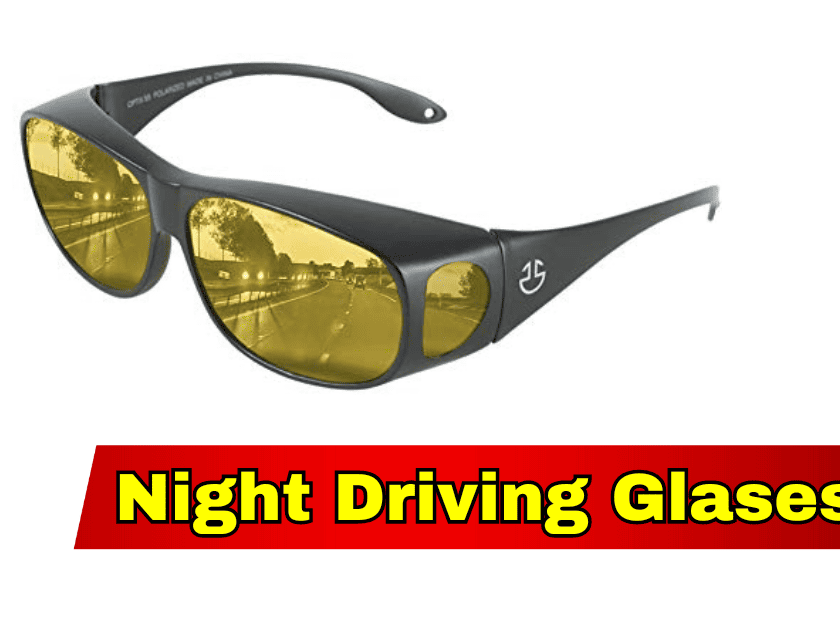Introduction
Adult driving education plays a crucial role in ensuring the safety, competence, and confidence of individuals who are learning to drive later in life. Here are key reasons highlighting the importance of adult driving education. Emphasis on safety is paramount during adult driving lessons. Instructors cover defensive driving techniques, hazard awareness, and the importance of adhering to traffic laws to reduce the risk of accidents.
Getting Started

2.1 Eligibility Requirements
Before embarking on adult driving lessons, it’s important to ensure you meet the eligibility requirements set by your local Department of Motor Vehicles (DMV) or equivalent licensing authority. These requirements may include:
- Age: Verify the minimum age requirement for enrolling in adult driving lessons. In many places, this is typically 18 years or older.
- Residency: You may need to be a resident of the state or region where you plan to obtain your driver’s license.
- Identification: Ensure you have valid identification documents, such as a government-issued ID or passport.
- Medical Fitness: Some jurisdictions require a medical examination or certification to ensure that you are physically fit to drive.
- Legal Status: Verify that you have legal status in the country or region where you intend to obtain a driver’s license.
2.2 Obtaining a Learner’s Permit
Once you meet the eligibility requirements, the next step is often obtaining a learner’s permit. The process usually involves the following steps:
- Written Test: Take and pass a written test covering basic traffic rules, road signs, and other essential driving knowledge. Study materials are often available from the DMV.
- Vision Test: Undergo a vision test to ensure that you meet the minimum visual acuity requirements for driving.
- Application Process: Complete the learner’s permit application, providing necessary documentation and paying any required fees.
- Learner’s Permit Issuance: Upon successful completion of the requirements, you will be issued a learner’s permit. This permit allows you to practice driving under the supervision of a licensed adult.
2.3 Choosing a Driving School
Selecting the right driving school is crucial for a positive learning experience. Consider the following factors when making your choice:
- Accreditation: Choose a driving school that is accredited and recognized by the relevant licensing authority.
- Instructor Qualifications: Ensure that the driving instructors are certified and experienced. They should be knowledgeable about local traffic laws and skilled in teaching.
- Lesson Structure: Evaluate the curriculum and lesson structure offered by the driving school. A well-organized program should cover a range of driving scenarios, including city and highway driving, parking, and defensive driving techniques.
- Facility and Vehicles: Check the condition of the driving school’s facilities and vehicles. They should meet safety standards, and vehicles should be equipped with dual controls for the instructor’s use.
- Reviews and Recommendations: Read reviews from other adult learners, and seek recommendations from friends or family who have undergone adult driving lessons.
- Cost and Schedule: Consider the overall cost of the program, including any additional fees. Ensure that the school’s schedule aligns with your availability.
- Insurance Discounts: Inquire if completing the driving school program makes you eligible for any insurance discounts.
Understanding the Basics
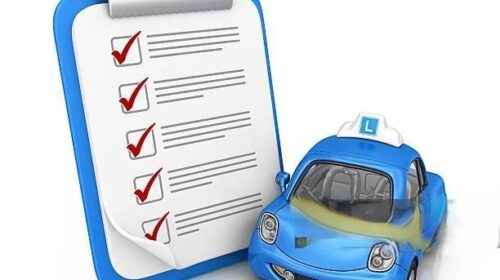
3.1 Vehicle Controls and Instruments
Understanding the basic controls and instruments of a vehicle is fundamental to safe driving. Key components include:
- Steering Wheel: Used to control the direction of the vehicle.
- Accelerator (Gas Pedal): Increases the speed of the vehicle.
- Brake Pedal: Slows down or stops the vehicle.
- Clutch (in manual transmission vehicles): Engages and disengages the transmission for changing gears.
- Gear Shift (in manual transmission vehicles): Selects different gears for varying speeds.
- Parking Brake: Keeps the vehicle stationary when parked.
- Dashboard Instruments: Familiarize yourself with speedometer, odometer, fuel gauge, and other indicators.
- Rearview and Side Mirrors: Adjust mirrors for optimal visibility.
3.2 Rules of the Road
Knowing and following the rules of the road is crucial for safe and lawful driving. Key aspects include:
- Traffic Lanes: Understand the rules for different types of lanes (e.g., passing, turning).
- Right of Way: Know who has the right of way in various situations.
- Traffic Signals: Understand the meaning of traffic lights and signals.
- Speed Limits: Adhere to posted speed limits and adjust speed based on road conditions.
- No Drinking and Driving: Never drive under the influence of alcohol or drugs.
- Seat Belts: Always wear seat belts, and ensure all passengers do the same.
3.3 Traffic Signs and Signals
Interpreting traffic signs and signals is essential for navigation and safety. Key categories include:
- Regulatory Signs: Indicate laws that must be obeyed (e.g., stop signs, speed limits).
- Warning Signs: Warn of potential hazards or changes in road conditions.
- Guide Signs: Provide information on routes, exits, and services.
- Traffic Signals: Understand the meaning of traffic lights and signals.
- Road Markings: Learn the significance of painted lines, arrows, and symbols on the road.
- Hand Signals (if applicable): Know common hand signals for communicating with other drivers.
Practical Driving Skills

4.1 Pre-Driving Checks
Before hitting the road, it’s essential to conduct pre-driving checks to ensure the vehicle is in good working condition. Key checks include:
- External Inspection:
- Check for any visible damage to the vehicle.
- Ensure all lights (headlights, brake lights, turn signals) are functional.
- Verify the condition of tires, including tread depth and inflation.
- Internal Inspection:
- Adjust the driver’s seat, mirrors, and steering wheel for comfort and visibility.
- Ensure all occupants are wearing seat belts.
- Check that the parking brake is engaged.
- Under the Hood:
- Verify fluid levels (oil, coolant, brake fluid).
- Check for any visible leaks.
- Ensure the battery is secure.
4.2 Basic Maneuvers (Turning, Parking, etc.)
Practicing basic maneuvers is essential for developing control over the vehicle. Key maneuvers include:
- Turning:
- Signal in advance.
- Check mirrors and blind spots.
- Execute turns smoothly and at appropriate speeds.
- Parking:
- Practice parallel parking, perpendicular parking, and angle parking.
- Use reference points to gauge distance.
- Check for traffic before entering or exiting a parking space.
- Backing Up:
- Turn your head to look behind when reversing.
- Use mirrors to assist in backing up.
- Be cautious of pedestrians and other vehicles.
- Three-Point Turn:
- Use the three-point turn when it’s safe and legal.
- Check for traffic in both directions before initiating the turn.
- U-Turns:
- Follow local regulations regarding U-turns.
- Check for clear visibility and oncoming traffic.
4.3 Defensive Driving Techniques
Defensive driving is about anticipating and responding to potential hazards on the road. Key techniques include:
- Maintaining Safe Following Distance:
- Keep a safe distance from the vehicle in front to allow for reaction time.
- Observation and Awareness:
- Continuously scan the road for potential hazards.
- Be aware of other drivers’ behaviors.
- Use of Mirrors:
- Regularly check rearview and side mirrors to be aware of surrounding traffic.
- Anticipating Actions of Others:
- Predict the actions of other drivers, pedestrians, and cyclists.
- Adapting to Road Conditions:
- Adjust driving speed and technique based on weather and road conditions.
- Avoiding Distractions:
- Stay focused on driving and avoid distractions such as phones.
- Handling Road Rage:
- Remain calm and avoid aggressive behavior.
- Proper Lane Usage:
- Follow lane discipline and use the appropriate lane for your intended maneuver.
By honing these practical driving skills, you enhance your ability to navigate various road situations safely and confidently. Consistent practice and application during adult driving lessons contribute to the development of a skilled and responsible driver.
Navigating Traffic

5.1 Merging and Changing Lanes
Merging and changing lanes require careful coordination to maintain smooth traffic flow. Key considerations include:
- Turn Signals:
- Always use turn signals to indicate your intention to merge or change lanes.
- Signal well in advance to give other drivers time to react.
- Blind Spot Checks:
- Before changing lanes, check your blind spots by looking over your shoulder.
- Be aware of vehicles in your peripheral vision.
- Smooth Transitions:
- Merge or change lanes smoothly, without sudden movements.
- Adjust your speed to match the flow of traffic in the lane you are entering.
- Maintain Speed:
- When merging onto a highway, try to match the speed of the traffic already on the road.
5.2 Intersections and Right of Way
Intersections can be complex, and understanding the right of way is crucial for preventing collisions. Key guidelines include:
- Traffic Signals:
- Obey traffic signals and signs governing the intersection.
- Stop at stop signs and obey traffic lights.
- Right of Way Rules:
- Yield the right of way to vehicles already in the intersection.
- If two vehicles arrive at a four-way stop simultaneously, the vehicle on the right has the right of way.
- Pedestrian Right of Way:
- Always yield to pedestrians in crosswalks.
- Exercise caution at intersections with pedestrians present.
- Turning Rules:
- Follow specific rules for turning, such as yielding to oncoming traffic when making a left turn.
5.3 Dealing with Traffic Challenges
Navigating through challenging traffic situations requires a combination of defensive driving and effective decision-making:
- Heavy Traffic:
- Maintain a safe following distance.
- Stay patient and avoid aggressive maneuvers.
- Construction Zones:
- Obey reduced speed limits in construction zones.
- Be aware of lane closures and follow detour signs.
- Inclement Weather:
- Adjust your driving speed to match road conditions.
- Increase following distance in rain, snow, or fog.
- Road Obstacles:
- Navigate around potholes or road debris safely.
- Be cautious when roads are uneven or damaged.
- Emergency Vehicles:
- Yield the right of way to emergency vehicles with lights and sirens.
- Pull over to the side of the road when emergency vehicles approach.
- Handling Aggressive Drivers:
- Avoid engaging with aggressive drivers.
- Allow them to pass safely and maintain a safe distance.
- Unexpected Situations:
- Stay alert to unexpected events, such as sudden stops or obstacles in the road.
- Be prepared to react quickly and decisively.
Learning how to handle these traffic scenarios during adult driving lessons prepares you to navigate real-world driving conditions safely and responsibly. Consistent practice and adherence to traffic rules contribute to your overall proficiency as a driver.
Driving in Different Environments

6.1 Urban Driving
Urban driving presents unique challenges due to congested traffic, frequent stops, and interactions with pedestrians. Key considerations include:
- Traffic Management:
- Navigate through heavy traffic by maintaining a safe following distance and avoiding abrupt maneuvers.
- Be aware of traffic signals, signs, and pedestrian crossings.
- Pedestrian Awareness:
- Watch for pedestrians and be prepared to yield at crosswalks.
- Check for pedestrians when turning at intersections.
- Parking:
- Practice parallel parking and maneuvering into tight spaces.
- Be aware of parking regulations and restrictions.
- Public Transportation:
- Be mindful of buses, trams, and bicycles sharing the road.
- Allow public transportation vehicles to merge or stop as needed.
6.2 Highway Driving
Highway driving involves higher speeds and longer distances. Focus on the following aspects:
- Entering and Exiting Highways:
- Use acceleration lanes to match highway speed when entering.
- Signal early and merge smoothly when exiting.
- Maintaining Safe Following Distance:
- Keep a safe following distance to allow for sudden stops and changes in speed.
- Use the “two-second rule” to gauge your following distance.
- Lane Discipline:
- Follow posted speed limits and stay in the right lane if driving slower than other traffic.
- Use the left lanes for passing or faster travel.
- Merging onto Highways:
- Signal and merge with the flow of traffic.
- Adjust your speed to match the speed of the vehicles already on the highway.
6.3 Rural Roads and Special Considerations
Driving on rural roads requires attention to different factors, including:
- Narrow Roads and Blind Curves:
- Slow down when navigating narrow or winding roads.
- Be cautious of blind curves where visibility is limited.
- Wildlife Crossings:
- Watch for wildlife, especially during dawn and dusk.
- Be prepared to slow down or stop if animals are crossing the road.
- Limited Services:
- Plan for limited access to services such as gas stations and repair shops.
- Ensure your vehicle is in good condition before embarking on a rural drive.
- Farm Vehicles:
- Be patient when sharing the road with farm vehicles.
- Pass farm equipment safely and only when it’s legal and safe to do so.
- Weather Challenges:
- Rural areas may experience adverse weather conditions.
- Be prepared for changes in weather, especially during long drives.
Adapting to different driving environments requires a combination of skills, awareness, and adherence to specific rules and guidelines. Adult driving lessons should include practical training in various settings to ensure that drivers can confidently navigate urban, highway, and rural road scenarios.
Handling Emergency Situations

7.1 Brake Failure
Brake failure is a critical emergency that requires quick and decisive action. Follow these steps:
- Stay Calm:
- Take a deep breath and remain as calm as possible.
- Downshift (Manual Transmission):
- If you’re driving a vehicle with a manual transmission, downshift to a lower gear to slow down the vehicle.
- Pump the Brakes:
- Attempt to pump the brakes rapidly to build up brake fluid pressure.
- Emergency Brake:
- Apply the emergency or parking brake gradually. Be aware that sudden application can lead to skidding.
- Shift to Neutral (Automatic Transmission):
- If pumping the brakes and using the emergency brake do not work, shift the transmission to neutral to gradually slow down.
- Steer to Safety:
- Steer the vehicle to a safe location away from traffic, if possible.
- Use Hazard Lights:
- Activate hazard lights to alert other drivers to the emergency.
- Signal:
- Signal your intentions to other drivers using turn signals.
- Call for Help:
- Use a phone to call for assistance, such as roadside assistance or emergency services.
7.2 Tire Blowouts
A sudden tire blowout can be startling, but the right actions can help maintain control:
- Grip the Steering Wheel Firmly:
- Hold the steering wheel with both hands and maintain a firm grip.
- Do Not Slam the Brakes:
- Avoid slamming on the brakes, as it can lead to loss of control.
- Gradually Lift Off the Accelerator:
- Ease off the accelerator pedal gradually.
- Steer Straight:
- Keep the vehicle moving in a straight line. Do not make sudden turns.
- Wait to Brake:
- Wait until the vehicle has slowed down considerably before applying the brakes gently.
- Pull Over Safely:
- Signal your intention to pull over to the side of the road.
- Change the Tire:
- If it’s safe to do so, change the flat tire with the spare tire or seek professional assistance.
7.3 Dealing with Accidents
In the unfortunate event of an accident, prioritize safety and follow these steps:
- Assess Injuries:
- Check for injuries and administer first aid if needed.
- Call Emergency Services:
- Call emergency services immediately if there are injuries or significant damage.
- Move to a Safe Location:
- If possible and safe, move the vehicles involved to the side of the road to avoid blocking traffic.
- Exchange Information:
- Exchange names, addresses, insurance information, and vehicle details with other involved parties.
- Document the Scene:
- Take photos of the accident scene, including vehicle damage and any relevant road signs or signals.
- Notify Authorities:
- Report the accident to the police, even for minor incidents.
- Witness Information:
- Collect contact information from any witnesses to the accident.
- Stay Calm and Cooperative:
- Remain calm and cooperative when interacting with other parties and authorities.
- Seek Medical Attention:
- Even if injuries seem minor, seek medical attention promptly.
- Contact Insurance:
- Notify your insurance company about the accident as soon as possible.
Night Driving and Adverse Conditions

8.1 Tips for Driving at Night
Night driving presents unique challenges, and it’s crucial to take extra precautions:
- Ensure Adequate Lighting:
- Check that all vehicle lights (headlights, brake lights, and turn signals) are functioning properly.
- Use high beams when appropriate, but dim them for oncoming traffic.
- Reduce Speed:
- Drive at a speed that allows you to react to unexpected situations.
- Adjust your speed based on visibility and road conditions.
- Increase Following Distance:
- Maintain a greater following distance to account for reduced visibility.
- This gives you more time to react to the actions of other drivers.
- Stay Focused:
- Minimize distractions inside the vehicle.
- Stay focused on the road, and be aware of your surroundings.
- Use Peripheral Vision:
- Scan the road using your peripheral vision to detect movement or obstacles.
- Avoid Overdriving Headlights:
- Don’t drive so fast that your stopping distance is farther than the distance illuminated by your headlights.
- Be Mindful of Pedestrians and Cyclists:
- Watch for pedestrians and cyclists, and use caution at crosswalks.
8.2 Driving in Rain, Snow, and Fog
Adverse weather conditions require additional precautions to ensure safety:
- Reduce Speed:
- Slow down in rainy, snowy, or foggy conditions.
- Wet or icy roads reduce traction, requiring more time to stop.
- Turn on Headlights:
- Use headlights in inclement weather, even during daylight hours.
- This increases your visibility to other drivers.
- Increase Following Distance:
- Maintain a greater following distance to allow for longer stopping distances.
- Use Windshield Wipers:
- Ensure windshield wipers are in good condition and use them as needed.
- Avoid Sudden Maneuvers:
- Make gradual turns and avoid sudden lane changes.
- Sudden movements can lead to skidding on slippery surfaces.
- Watch for Hydroplaning:
- Be cautious of hydroplaning on wet roads by reducing speed.
- If you start to hydroplane, ease off the accelerator and steer in the direction you want to go.
- Stay Updated on Weather Conditions:
- Check weather forecasts before embarking on a trip.
- Be aware of potential changes in weather conditions.
8.3 Dealing with Glare and Reduced Visibility
Glare from oncoming headlights and reduced visibility due to weather can be challenging:
- Use Anti-Glare Features:
- Adjust your rearview mirror to its nighttime setting to reduce glare from headlights behind you.
- Use the sun visor to block glare from the sun.
- Keep Windshield Clean:
- Ensure the windshield is clean, both inside and outside.
- A dirty windshield can exacerbate glare.
- Dim Dashboard Lights:
- Dim the lights on your dashboard to reduce internal reflections.
- Wear Polarized Sunglasses (Day):
- If driving during the day, wear polarized sunglasses to reduce glare.
- Follow Lane Discipline:
- Stay within your lane and avoid drifting toward oncoming headlights.
- Use Low Beams in Fog:
- In foggy conditions, use low beams and fog lights if your vehicle is equipped with them.
- High beams can reflect off the fog and reduce visibility
Preparing for the Driving Test
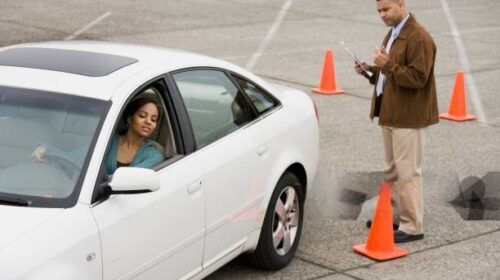
9.1 Mock Driving Tests
Mock driving tests are valuable tools for assessing your readiness and identifying areas for improvement. Here’s how to make the most of them:
- Simulate Test Conditions:
- Replicate the conditions of the actual driving test as closely as possible. This includes using the same type of vehicle and following the same rules.
- Practice Different Scenarios:
- Include a variety of driving scenarios in your mock tests, such as urban driving, highway driving, parking, and navigating intersections.
- Get Feedback:
- Have a friend, family member, or instructor act as the examiner and provide constructive feedback.
- Focus on areas where improvement is needed.
- Review Mistakes:
- Analyze any mistakes made during the mock test and understand the reasons behind them.
- Take steps to address and correct these issues in subsequent practice sessions.
- Time Management:
- Practice managing your time during the test, including completing maneuvers within the allotted time.
- Build Confidence:
- Use mock tests to build confidence and familiarize yourself with the testing process.
- Repetition can help ease nervousness on the actual test day.
9.2 Common Mistakes to Avoid
Knowing common mistakes can help you focus on areas that may pose challenges. Here are some mistakes to avoid:
- Failure to Check Blind Spots:
- Always check blind spots before changing lanes or making turns.
- Incomplete Stops:
- Come to complete stops at stop signs and red lights.
- Speeding:
- Adhere to posted speed limits and adjust your speed according to road conditions.
- Incorrect Lane Changes:
- Signal and check mirrors and blind spots before changing lanes.
- Poor Parking:
- Practice parking in various situations, including parallel parking and perpendicular parking.
- Ignoring Right of Way:
- Understand and yield the right of way in different scenarios, such as at intersections.
- Inadequate Observation:
- Be vigilant and continuously scan your surroundings for potential hazards.
- Improper Use of Signals:
- Use turn signals appropriately to communicate your intentions.
9.3 Test Day Tips
On the day of your driving test, follow these tips to ensure a smooth experience:
- Arrive Early:
- Arrive at the testing location well ahead of the scheduled time.
- Bring Required Documents:
- Have all necessary documents, including your learner’s permit and any required identification.
- Use the Vehicle Safely:
- Familiarize yourself with the vehicle’s controls and features before starting the test.
- Follow Instructions:
- Listen carefully to the examiner’s instructions and follow them precisely.
- Stay Calm:
- Keep calm and composed during the test. Take deep breaths if needed.
- Communicate Clearly:
- Use clear signals and verbal communication with the examiner.
- Obey Traffic Laws:
- Strictly adhere to all traffic laws and regulations.
- Show Confidence:
- Demonstrate confidence in your driving abilities.
- Practice Positive Driving Habits:
- Implement all the safe driving habits you’ve learned during your lessons.
After Obtaining a Driver’s License

10.1 Safe Driving Practices
After obtaining your driver’s license, it’s crucial to adhere to safe driving practices:
- Avoid Distractions: Stay focused on driving, avoiding distractions like texting or adjusting the radio.
- Obey Traffic Laws: Adhere to speed limits, traffic signals, and other rules of the road.
- Use Seat Belts: Always wear your seat belt, and ensure that passengers do the same.
- Maintain Safe Following Distance: Keep a safe distance from the vehicle in front for proper reaction time.
- Stay Aware of Surroundings: Continuously scan your surroundings and check mirrors for potential hazards.
- Adapt to Weather Conditions: Adjust driving behavior based on weather conditions such as rain, snow, or fog.
- Avoid Aggressive Driving: Stay calm and avoid aggressive behaviors like tailgating or excessive speeding.
- Be Mindful of Pedestrians and Cyclists: Watch for pedestrians and cyclists, especially in urban areas.
- Use Turn Signals: Clearly signal your intentions to other drivers by using turn signals.
- Limit Night Driving Fatigue: If driving at night, take breaks to avoid fatigue and ensure alertness.
- Know Your Vehicle’s Limits: Understand the capabilities and limitations of your vehicle, especially in adverse conditions.
10.2 Continuing Education
Ongoing learning is essential to maintain and improve your driving skills:
- Defensive Driving Courses: Take defensive driving courses to refresh and enhance your skills, covering advanced techniques and safety strategies.
- Traffic Safety Workshops: Attend workshops or seminars on traffic safety to stay informed about updates in traffic laws and regulations.
- Online Resources: Utilize online resources and educational materials to stay informed about safe driving practices.
- Advanced Driving Courses: Consider advanced driving courses focusing on specific skills, such as handling emergency situations or mastering high-performance driving.
- Stay Informed About Changes: Keep abreast of any changes or updates to traffic laws in your region.
10.3 Vehicle Maintenance
Regular maintenance is crucial for vehicle safety and performance:
- Regular Inspections: Conduct regular inspections, checking tire pressure, fluid levels, and brakes.
- Scheduled Maintenance: Adhere to the manufacturer’s recommended maintenance schedule, including oil changes, filter replacements, and routine tasks.
- Tire Care: Monitor tire tread depth and replace tires when necessary. Rotate tires regularly to ensure even wear.
- Brake Checks: Pay attention to changes in braking performance. Have the brake system inspected if you notice unusual noises or reduced responsiveness.
- Lights and Signals: Regularly check and replace any burnt-out bulbs in headlights, brake lights, and turn signals.
- Fluid Levels: Regularly check and maintain proper levels of essential fluids, including oil, coolant, brake fluid, and windshield washer fluid.
- Battery Maintenance: Inspect the battery for signs of corrosion, and ensure it is securely in place. Replace the battery as needed.
- Emergency Kit: Keep an emergency kit in your vehicle with essentials like a first aid kit, flashlight, jumper cables, and basic tools
Resources and Additional Information
11.1 Online Resources
Stay informed and enhance your driving knowledge through online resources:
- Government Websites: Explore official government websites related to transportation and road safety for up-to-date information on laws and regulations.
- Driving Manuals: Access digital versions of driving manuals provided by your local DMV or equivalent authorities.
- Driving Safety Websites: Visit reputable websites dedicated to driving safety, which often provide tips, articles, and resources for drivers.
- Interactive Simulations: Some online platforms offer interactive simulations to practice various driving scenarios and improve decision-making skills.
- Driving Apps: Explore educational apps designed to improve specific aspects of driving, such as hazard perception or defensive driving.
11.2 Recommended Reading
Expand your knowledge of driving through recommended reading materials:
- Driver’s Manuals: Revisit your local driver’s manual regularly for updates and to reinforce important rules and guidelines.
- Books on Defensive Driving: Look for books that delve into the principles of defensive driving, offering insights into anticipating and avoiding potential hazards.
- Traffic Psychology Books: Explore literature on traffic psychology to understand human behavior and decision-making on the road.
- Advanced Driving Techniques: Consider books that cover advanced driving techniques, providing in-depth insights into vehicle dynamics, handling, and control.
- Biographies of Expert Drivers: Reading about the experiences and strategies of expert drivers can offer valuable perspectives.
11.3 Further Training Opportunities
Seek additional training to enhance your driving skills:
- Advanced Driving Courses: Enroll in advanced driving courses offered by reputable driving schools or organizations to refine your skills.
- Defensive Driving Classes: Participate in defensive driving classes to learn strategies for avoiding collisions and handling challenging situations.
- Performance Driving Schools: If interested in high-performance driving, consider attending a performance driving school for specialized training.
- Specialized Workshops: Attend workshops or seminars focused on specific aspects of driving, such as eco-friendly driving practices or driving in extreme conditions.
- Driving Clinics: Look for driving clinics or events organized by automotive clubs or manufacturers that provide hands-on experience and guidance.
Conclusion
As you conclude your journey in learning to drive, it’s essential to reflect on the key points covered. Your journey as a driver doesn’t end with obtaining a license. Here’s some encouragement for ongoing improvement.
Remember, driving is a skill that evolves over time. By embracing a mindset of ongoing improvement, you contribute to a safer and more harmonious driving environment for everyone. Safe travels on your continuous journey as a responsible and skilled driver!

